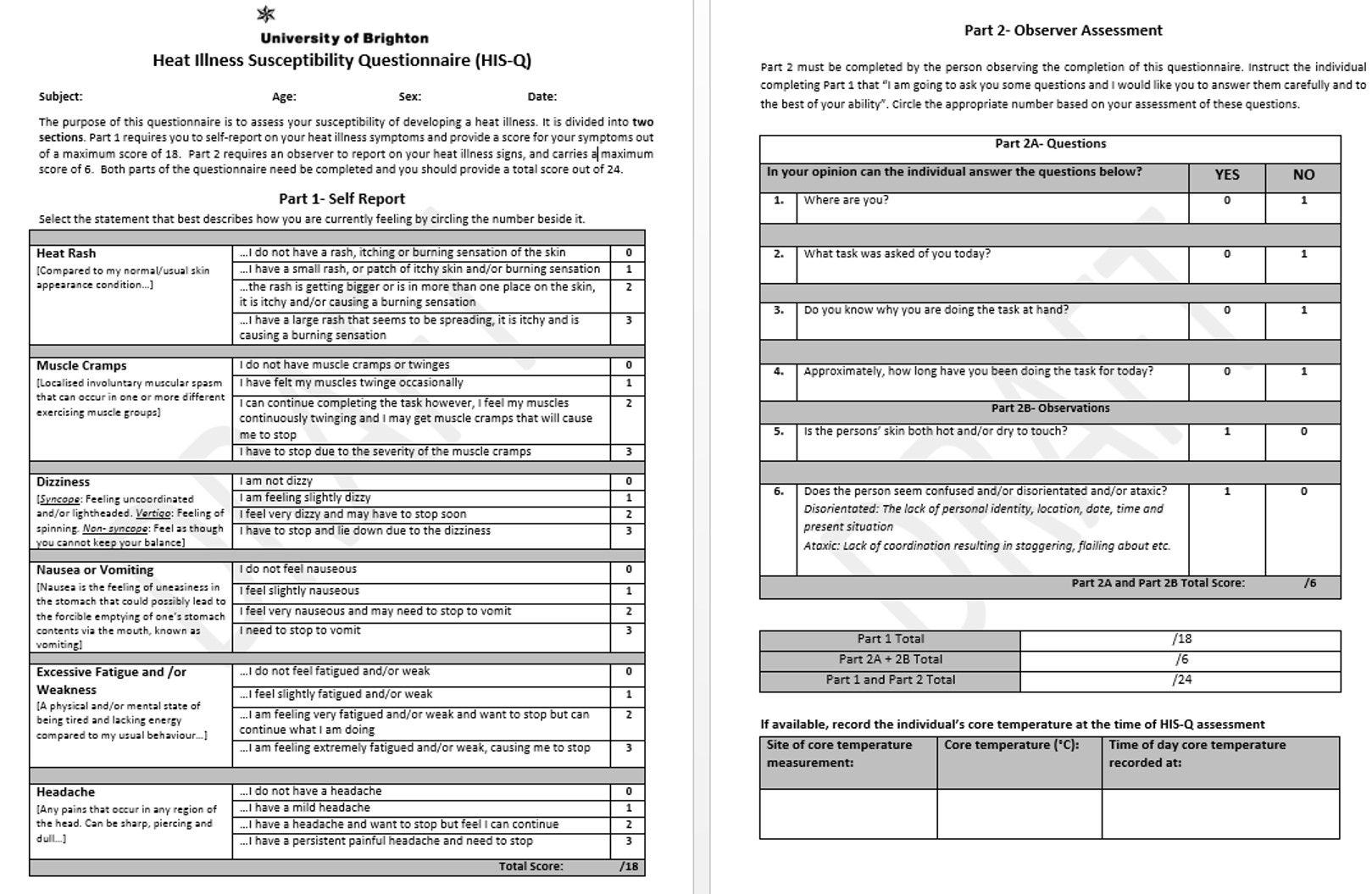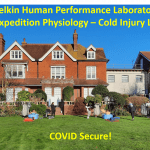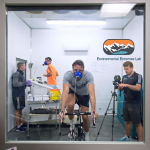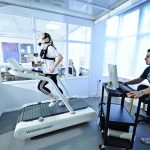The validity and reliability of a new questionnaire for the detection of heat illness susceptibility
April 2017
Conference: BASES Student Conference 2017
At: University of St Mark and St John, Plymouth
Authors: Kirsty Waldock, Rebecca Relf, Ash Willmott, Mark Hayes, Peter Watt, Nick Webborn, Rowley Cottingham, Neil Maxwell
Heat illness can lead to life threatening consequences for different populations including: athletes, military personnel and the elderly, due to competing, working and living in hot environments, respectively. The aim of this investigation, which received university ethics approval, was twofold. Firstly, to investigate the reliability of a new heat illness susceptibility questionnaire (HIS-Q), developed with the expertise of two medical physicians, through a multiple trials research design. Secondly, the construct validity of the HIS-Q was assessed using a ten-day heat acclimation (HA) protocol. The HIS-Q comprises of a self-report symptoms and an observer report of signs, cumulating in a total score. In study 1, twelve (11 males and 1 female) participants (age; 21 ± 2 years, mass; 75.2 ± 8.4 kg and VO2peak; 47.6 ± 8.1 ml.kg-1.min-1) completed one preliminary and three experimental trials. The preliminary graded exercise test on a motorised treadmill in an environmental chamber set at 40°C and 40% relative humidity (RH), was used to determine individual running speeds that produced a metabolic heat production of 9W.kg-1 for the experimental trials. The HIS-Q was completed in the experimental trials; pre exercise, at a core temperature (Tcore) of 38.5°C and at a Tcore of 39.5°C, or at volitional exhaustion. In study 2, twenty male participants (age; 24 ± 7 years, mass; 76.1 ± 9.5 kg and VO2peak; 49.8 ± 6.1 ml.kg-1. min-1) completed one preliminary trial to determine VO2peak, followed by ten days HA. The HIS-Q was completed pre and post exercise on day 1 and 10 of HA. Study 1 demonstrated the data points for peak HIS-Q scores, between trials, lay within the Bland-Altman’s limits of agreement for all but one data point between trial 2 and 3. The interclass coefficients (ICC) (95% confidence interval) were: trial one and two, r = 0.67 (-0.29, 0.90); trial one and three, r = 0.55 (-0.44, 0.87); trial two and three, r = 0.67 (-0.21, 0.91). Study 2 indicated a significant decrease in HIS-Q scores between post HA on day 1 and 10 (z = -3.126, P = 0.02, r = -0.699). Early indications from these exploratory set of studies suggest that the HIS-Q approaches moderate reliability and shows the potential for being a sensitive tool for assessing susceptibility of developing a heat illness after longer-term heat adaptations. The HIS-Q warrants further investigation under different exercise-heat stress models, such as field-based and prolonged exercise under heat stress conditions.

































